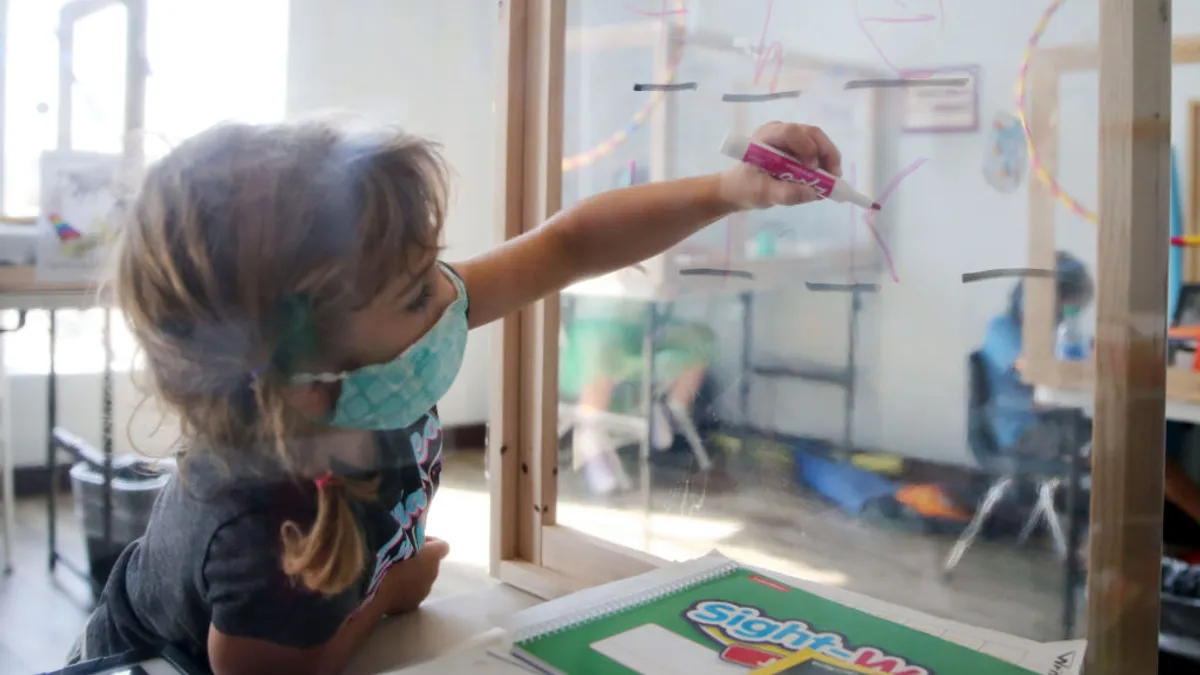As one of his first tasks as U.S. secretary of education, Miguel Cardona has been tasked with reopening the nation's schools. To promote that effort, the U.S. Department of Education held a virtual National Safe School Reopening Summit on Wednesday for teachers, broader school and district staff, and education leaders to discuss COVID-19's impact on K-12, and to share their experiences and best practices as schools nationwide phase back into in-person learning.
"The dirty little secret is that as hard as closing was, opening is harder," said Eric Gordon, CEO of the Cleveland Metropolitan School District.
Communicate and forge relationships
Many participants stressed the need for transparency and communication with all stakeholders, but especially parents.
"Our connection with families is much stronger than it ever has been, in terms of our teachers in the remote space, online, talking to parents and students every single day and really getting to know the families and understand the challenges," said Shari Obrenski, president of the Cleveland Teachers Union.
School and district leaders should be building relationships, as well.
"While school districts should always conduct ongoing and specific outreach, trust is a key component of any reopening plan, and schools and districts must intentionally cultivate it with communities," said Donna Harris-Aikens, senior adviser for policy and planning at the U.S. Department of Education.
Students attending the summit also noted the importance of their teachers and principals routinely checking in on them and bringing mental health and wellness to the forefront, offering them choice in their learning or simply reminding them to wear masks.
Collaborate — even when you don't want to
In many instances, education leaders noted the importance of working together within and outside the school community.
"We have groups that represent different stakeholders coming together to problem-solve," said Obrenski, adding that it's important to "do the messy work" of talking through the challenges.
"You can get angry with each other, and it's tough, but it's so worth it on the other side," she said.
Collaborative work doesn't just take place between different educational or community groups — it should be happening inside the school building, as well, attendees said. For example, Aaron Creel, a facilities manager for Cleveland Metropolitan School District, said working together with his schools' staff and leaders was key to planning out the logistics of a socially distanced and safe return to school buildings.
"They're the ones that have to deal with the (student) flow," Creel said. "Once we get their ideas ... then we sprung into action with our (reconfiguration) signage."
Once the logistical plans were made, Creel and his team shared them with teachers and principals, who were able to see the new classroom occupancy or how many students can actually fit into their rooms. It gave educators "a jump start of what they're dealing with when the kids come back in-person," he said. "We really had to work together to get this done."
Get creative and be consistent with messaging, plans
Leaders also shared the varied and sometimes creative ways in which they are adopting the Centers for Disease Control and Prevention's guidelines — from using monster stickers on the floor to mark social distancing requirements for elementary students to teaching them how to do a "zombie walk" as a method of remaining apart.
"I recently saw last week a playlist that a music teacher had put together for the length of time — which is about 20 seconds — for hand-washing," said Harris-Aikens. She added it is important to reinforce the importance of personal protective equipment throughout the day, with reminders in the morning and during lunch and/or recess time.
Mask breaks have also been key to successfully getting children to wear masks, added Amy Hom, principal at P.S. 001 Manhattan Alfred E. Smith Elementary School in New York. "We've also bribed — we have stickers, we have candy, we have decorations — whatever it takes to keep those masks on," Hom said.
Her school also held masking workshops for younger students and their families over the summer, during which staff took pictures with and without their masks on so students and families knew what to expect in school.
And it's not just about reminding students to wear masks: Teachers also had to be encouraged, Hom said, because they are the adults and set the example for children.
Harris-Aikens said it is important to make sure the reminders are "actually a part of the system and not something that an individual person has to remember." For example, those reminders could be enforced through signage or announcements, rather than falling on one person's shoulders to carry the message.







 Dive Awards
Dive Awards
















